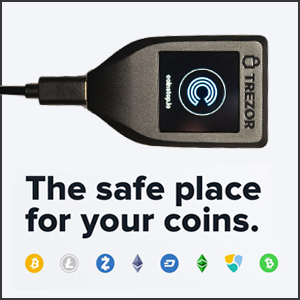
Well, well, well. It finally seems like we will have our ETH Merge. September 15th is now the day that is slated for the biggest change in Ethereum’s 7-year history.
Ethereum co-founder and crypto god Vitalik Buterin has stated that the upgrade will eventually enable the network to facilitate an eye-watering 100,000 transactions per second via second-layer solutions. While most of the press has (rightly) focused on this side of things, as well as the reduction of energy consumption that will come out of moving to Proof-of-Stake from Proof-of-Work, I want to focus on a different kind of effect I foresee.
Are you looking for fast-news, hot-tips and market analysis?
Sign-up for the Invezz newsletter, today.
Let’s talk about the staking yield, as the ramifications here are huge with regards to valuations.
Ethereum is the currency of Web3
Ethereum has already established itself as the burgeoning currency of DeFi and Web3. NFTs, for the most part, are priced in ETH. Decentralised apps often use ETH. Even hiring developers for work related to the space, or other freelancers, often comes via quotes and salaries paid in ETH.
Its dominance of the total value locked is well, dominant. Value locked on Ethereum currently sits at $39 billion, comprising a 58% share of all of DeFi.
And post-merge, we will now have a staking yield with Ethereum – an interest rate earned by stakers for their work in maintaining the network. My thinking is that this could establish the ETH staking yield as the “risk-free” reference rate of DeFi.
Valuations
I tend to look at things from a macro perspective. Not only that, but I’m a trad-fi crossover – I began in conventional finance before falling in love with the world of decentralisation. This background sometimes influences how I look at things in the space, for better or worse.
One thing I always noticed was how challenging it was to value things correctly in the DeFi space. Look no further than the infamous UST death spiral. How many people had no idea of the risks that a 20% APY really presented?
In a post-Merge world, however, the risk could be quantified more accurately. Let’s say the risk-free (staking) yield lands at 5%, for argument’s sake (I know it will be dynamic, but I’m using 5% here for simplistic terms). All you’re eating here is the currency risk of the Ethereum tokens, just like the trad-fi risk-free rate comes with (USD) currency risk of its own.
Henceforth, if a swanky new DeFi protocol is offering a 20% yield, we know the risk premium here is 1500 bps, or 15%, which helps with the valuation process and risk-reward assessment. How does this compare to DeFi protocol X offering 10% yield, and hence a 5% risk premium?
Efficiency
People often forget the youth of Ethereum, if not the DeFi space in general. Ethereum celebrated its seventh birthday last week, still a little baby in the wider of scheme of things. But with the Merge finally getting locked in, the potential development of a risk-free rate here is just the latest sign that DeFi is maturing and becoming more efficient as an industry.
Crypto has caught a lot of flak over the last six months, a lot of it deserved. However, it is important to clarify that it was centralised finance, or CeFi, companies which committed the greatest blunders. Voyager Digital, Celsius, Three Arrows Capital and the numerous other players have been cleaned out.
Sure, we had Terra go under too, which is technically a DeFi protocol. But was it really? A flawed stablecoin design resided over by a highly centralised group calling themselves the Luna Foundation Guard doesn’t sound very DeFi to me.
DeFi therefore, for the most part, has held up pretty cleanly. And maybe, just maybe, Ethereum gives us our first risk-free reference rate.
Where to buy right now
To invest simply and easily, users need a low-fee broker with a track record of reliability. The following brokers are highly rated, recognised worldwide, and safe to use:
- Etoro, trusted by over 13m users worldwide. Register here >
- Capital.com, simple, easy to use and regulated. Register here >
*Cryptoasset investing is unregulated in some EU countries and the UK. No consumer protection. Your capital is at risk.



















